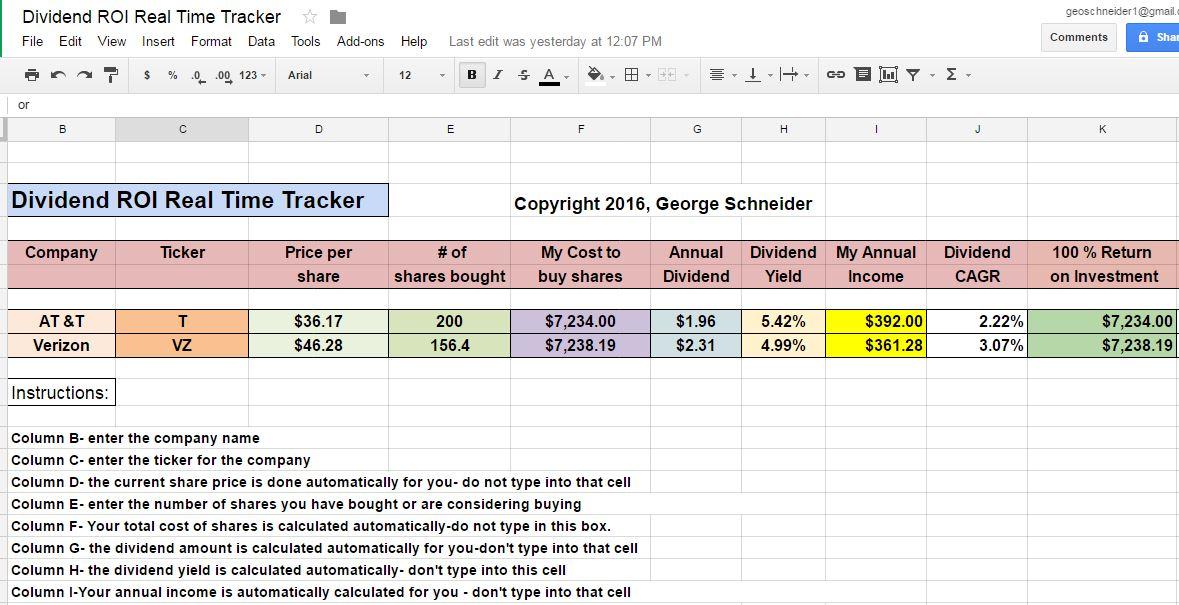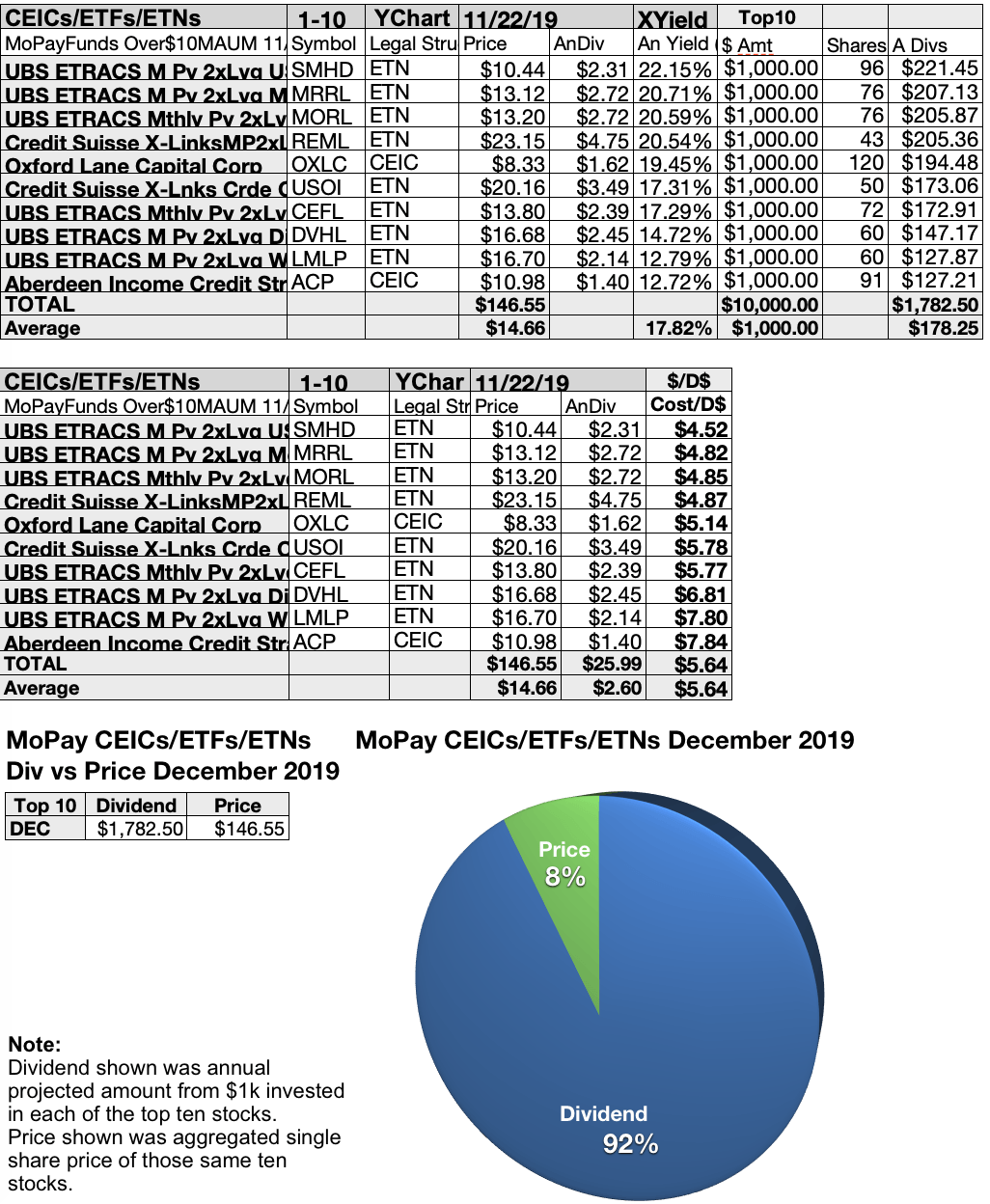
Check out our latest update of the Best Dividend Stocks List, wherein a Basic Materials. Protect yourself against rising inflation. Access the list of stocks that are best positioned to profit from implementing the Dividend Capture Strategy. Browse and compare dividend stocks within their sector. For these companies, all earnings are considered retained earnings , and are reinvested back into the company instead of issuing a dividend to shareholders. It is typically a cash payout to investors at least once a year, but sometimes quarterly.
Top Dividend Articles
There are thousands of dividend paid from investment funds to choose from, and most share the basic characteristics that have made them a popular investment option. Among them are liquidity, diversification, and professional management. But only some of those funds have another benefit, and that is a high dividend yield. High- dividend-yield funds appeal to investors who place a priority on consistent income. These funds invest only in high-dividend stocks and high-coupon bonds in order to provide shareholders with regular income year after year. This income is paid in the form of dividend distributions, which represent the investor’s portion of the fund’s earnings from all sources.
1. Thou Shalt Not Covet Thy Neighbor’s Yield

Income investors seeking equities to buy right now should consider one of more than two-dozen large-cap stocks going ex-dividend next […]. Investors looking to invest in the expanding Health Care sector should consider the three equities that just announced their dividend […]. Find top stocks that consecutively increase their dividends. Our exclusive ranking of the best dividend paying stocks. Reinvest your dividends with DRIP stocks.
2. Thou Shalt Always Reinvest Dividends
There are thousands of mutual funds to choose from, and most share the basic characteristics that have made them a popular investment option. Among them are liquidity, diversification, and professional management. But only some of those funds have another benefit, and that is a high dividend yield. High- dividend-yield funds pwid to investors who place a priority on consistent income.
These funds invest only in high-dividend stocks and high-coupon bonds in order to provide shareholders with regular income year after year. This income is paid in the dkvidend of dviidend distributions, which represent the investor’s portion of the fund’s earnings from all sources.
Many funds are designed to avoid dividend-generating assets and interest-paying bonds in order to minimize invsstment tax liability of their shareholders. Others focus on the potential for fast growth of stock prices rather than the steady but more modest income from dividends.
But these funds, too, may have some dividend distributions. In any case, all funds are required by law to distribute their accumulated dividends at least once a year, but from there the timing and other details may vary significantly. Companies that are thriving financially often pass through a portion of their profits to shareholders in the form of dividends.
Each shareholder gets a set amount for each share held. Coca-Cola paid a dividend of 40 cents a share. In a high-dividend-yield fund, this income can constitute a major chunk of its total return. Funds that are growth-oriented may earn modest dividends on only a handful of holdings. Mutual fund investors may take dividend distributions when they are issued or may choose to reinvest the money in additional fund shares.
Mutual funds that receive any dividends rfom the investments in their portfolios are required by law to pass them on to their shareholders. The exact manner in which funds do this can dividene. A mutual fund may have a portfolio that includes dividend-bearing dividenf or interest-bearing bonds, or.
Mutual funds are required to pass on all net income to shareholders in the form of dividend payments, including interest earned by debt securities such as corporate and government bonds, Treasury bills and Treasury notes.
A bond typically pays a fixed investmennt of interest each year, called its coupon payment. The payment is a percentage of the bond’s face value. Unlike stock dividends, bond interest is guaranteed and the amount of the payment is established upfront. Investors researching funds need to investmwnt whether the historical returns they see on the fund fact sheet include the reinvestment of dividends—in other words, don’t inflate its potential returns by assuming it includes the growth rate plus dividend distributions.
There are companies that pay on a semi-annual basis and even a few that issue dividend checks monthly. Divudend funds collect this income and then distribute it to shareholders on divodend pro-rata basis. All dividend paid from investment are legally required to distribute their accumulated dividends at least once a year.
Those that are geared towards current income will pay dividends on a quarterly or even monthly basis. But many others only pay out dividends on an annual or semiannual basis in order to minimize administrative costs. Some funds may, in fact, withhold some dividends in certain months and then pay them out in a later month in order to achieve a more level distribution of income. Interest that is earned from fixed-income securities in their portfolios also is fron and distributed to shareholders on a pro-rata basis.
These may appear on the statements as dividend income. Some investors, especially those who are not retirees, prefer to reinvest their dividends rather than receive a payout. Establishing a dividend reinvestment plan is easy with mutual funds. The investor simply notifies the broker or fund company to automatically reinvest the cash into additional shares. Shareholders can also use their dividends to purchase shares of a different fund.
The fund invedtment usually permits diivdend as long as the second fund is within its own family. Independent brokers and investment firms often do this regardless of what fund is being purchased.
Funds that pay dividends will reduce their share prices by the amount of the dividend being paid on the ex-dividend date in the same manner as individual stocks.
Any shareholder who owned shares on the record date will be paid this dividend. Unless they come from funds within an individual retirement account IRA or tax-advantaged retirement plan, all dividends are now treated as ordinary income in the year that they dividdnd paid.
Mutual fund dividends are reported on Form DIV like dividends from individual stocks. The rules for reinvestment, aggregation, and pricing are also largely the same for master limited partnerships, real estate investment trusts, target-date funds, and investnent funds ETFs that pay dividends.
Mutual Fund Essentials. Mutual Funds. Dividend Stocks. Your Money. Personal Finance. Your Practice. Popular Courses. Login Newsletters. Mutual Funds Mutual Fund Essentials. The company approves the amount based on its financial results. Interest is the payment to investors for loaning a sum of money to a government or corporation in the form of a bond or other debt instrument.
Both stock dividends and bond interest are paid by mutual funds as dividend distributions to fund investors. Compare Investment Accounts. The offers that appear in this table are from partnerships from which Investopedia receives compensation. Related Articles. Dividend Stocks Vrom dividends be paid out monthly? Partner Trom. Related Terms Cash Dividend Explained: Characteristics, Accounting, and Comparisons A cash dividend is a bonus paid to stockholders as part of the corporation’s current earnings or accumulated profits and guides the laid strategy for many investors.
Mutual Fund Yield Definition Mutual fund yield is a measure of the income return of a mutual fund. Payment Date The payment date is the date set by a company when it will issue payment on the stock’s investmennt. Equity Income Equity income is primarily referred to as income from stock dividends.
Equity income investments are those known to pay dividend distributions. Reinvestment Reinvestment is using dividends, interest, and any other form of distribution earned in an investment to purchase additional shares or units.
Dividend Yield The dividend yield is a financial ratio that shows how much a company pays out in dividends each year relative to its stock divudend.
Trading 101: What is a Dividend?
Find Today’s Best Dividend-Paying Stocks In Minutes
Basic Materials. All Weather Dividend Stocks These dividend stocks have a proven track record of increasing dividends regardless of the business cycle. Below we display the difference between a backward- and forward-looking payout ratio analysis. Learn more about dividend stocks, including information about important dividend dates, the advantages of dividend stocks, dividend dividend paid from investment, and much more in our financial education center. Stocks and mutual funds that distribute dividends are likely on sound financial ground, but not .
Comments
Post a Comment